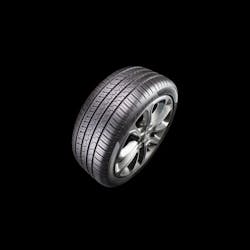There’s one absolute, non-negotiable first step to take when a consumer shows up with a damaged ultra-high performance tire. Experts from four tire repair companies all agree: Consult the tire manufacturer’s warranty.
“If the tire manufacturer says that their tire is repairable, then the repair procedures mimic a standard tire,” says John Garrett, technical director for Rema Tip Top North America Inc. “Our recommendation is to always contact the tire manufacturer.”
And even then, Garrett says technicians will find differences in approach. About five years ago he spent time investigating what tire manufacturers suggest. He looked at warranties for the most popular brands as well as their smaller competitors. “The repair suggestions and the limitations were all over the board.”
That’s why Rema Tip Top stopped issuing its own repair advice, Garrett says, and instead directs its customers to research and rely on what the specific tire manufacturer suggests.
The experts from 31 Inc., Myers Tire Supply and Tech International all repeated Garrett’s advice.
But why? It may be that the tire manufacturer says no matter the size or location of the injury, a repair isn’t advised. Pirelli Tire North America takes that stand. Other tire companies might allow one repair, but then also say that repair knocks a V- or W-rated tire down a spot on the speed ratings chart. Some companies say a repair removes a tire’s speed rating altogether.
Billy Johnson, senior technical trainer at Tech International, says the check of the tire manufacturer’s warranty should come even before the tire is inspected. “Don’t waste your time doing an inspection if the warranty doesn’t cover a repair.”
If a repair is allowed, Johnson says technicians can follow standard proper tire repair procedures, beginning with removal of the tire from the wheel to do a full interior and exterior inspection. The Rubber Manufacturers Association (RMA) outlines the process in 10 steps.
Smaller repair area
Once a UHP tire is at least eligible for repair, Mike Iafigliola, product manager for Myers Tire Supply, says there is a good rule of thumb to follow when inspecting tire damage and determining if it qualifies for a fix.
“The repairable area in the crown of a higher performing speed-rated tire is slightly narrower than that of a standard passenger and light truck tire. This area is generally defined as being between the inside edges of the outermost grooves in the tread pattern. On the other hand, the repair area of a standard tire is between the outside edges of the outermost grooves in the tread pattern.”
Z-rated tires
Robbie Bushnell, vice president of tire repair products for 31 Inc., says Z-rated tires come with their own rules when determining the size of a repairable puncture.
While the RMA allows for punctures up to a quarter-of-an-inch, or 6 millimeters, for passenger and light truck tires, Bushnell says for Z-rated tires the puncture can be no larger than an eighth-of-an-inch, or 3 millimeters.
“That’s a pretty small hole, but a Z-rated tire could be on the Autobahn and driving down the road at 240 kilometers, so that’s why the restriction is there,” Bushnell says. ■
What the RMA says about repairing speed-rated tires
In its guidelines for puncture repair procedures, the Rubber Manufacturers Association (RMA) offers this advice for all speed-rated tires:
“For speed-rated tires, the tire manufacturer must be contacted for its individual repair policy and whether the speed rating is retained after repair.
“Although a tire may be speed rated, we do not endorse the operation of any vehicle in an unsafe or unlawful manner. A properly repaired speed-rated tire (per the tire manufacturer’s recommendations) can be used for legal highway service, just as a properly repaired non-speed-rated tire.”




